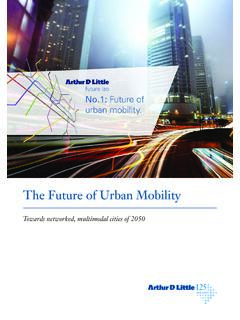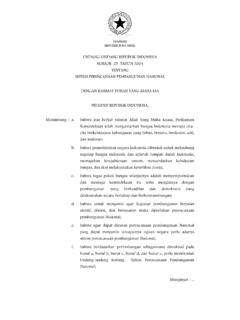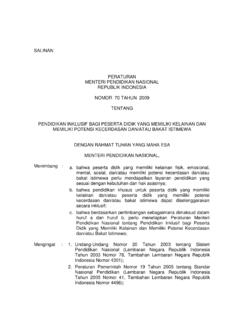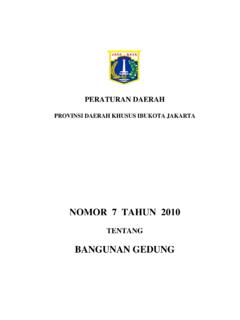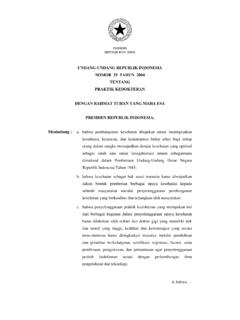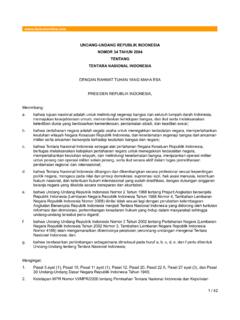Transcription of Digitalization of government services - Arthur D. Little
1 We want an experience not just great IT Digitalization of government servicesNovember, 2018 ContentIntroduction 31. Digitalization : Success stories abound, but so do failures 42. Aligned vision and prioritized goals: Driven by leadership 83. Pragmatic implementation: Bridging vision and execution 104. Enablers: Without them, best intentions can lead to limited results 135. Foundations: Build for scale and scope 146. Key takeaways 18 Authors:Rajesh DunejaPrincipalTelecom, Information, Media & Electronics, LaskuPrincipal, Telecom, Information, Media & Electronics, KileforsManaging Partner NordicsStrategy & PichaiPrincipalTelecom, Information, Media & Electronics, for their valuable support: Sally Menassa and Luv Nijhawan.
2 3 IntroductionGovernments and constituent entities are embracing Digitalization to provide user-friendly government services to citizens and simultaneously reduce their cost to offer such services . There are numerous success stories, interestingly some of them are from very small nations but failures abound as successful Digitalization approach should be viewed from the citizens experience perspective rather than purely as a large process automation / IT modernization program. A successful Digitalization initiative entails:nnAligned vision: Political leadership sets a stretched agenda with continued commitment throughout the implementation goals: As in any such large transformation where monetary and human resources are limited, it is prudent to have an aligned roadmap and prioritized projects to be implemented.
3 This ensures the successful completion of constituent projects in a timely manner and within implementation: The implementation should be pragmatic with a digital first approach in the redesign of processes. The implementation approach should also evaluate alternate business models, which frees up government resources and allows it to focus on the critical part of the process. nnEnablers: Any such large initiative requires strong enablers in terms of committed funding for key projects, effective coordination and governance of initiatives, continued capability building and sourcing to manage the transformation and usage of open platforms for standardization and reuse along provision of open foundational elements: Building strong foundational elements allows subsequent Digitalization to easily scale up is a sustainable way. The foundational element should address the legal underpinning the Digitalization efforts, availability of quality data, deployment of identity platforms and ensure citizens can easily access and adopt the digital Digitalization : Success stories abound, but so do failuresDigital transformation of government institutions at various levels of government , whether national, state or city level, has been accelerated by a confluence of factors.
4 These factors include the widespread adoption of Internet-based services , underpinned by Internet penetration, increasing expectations for convenient access to government services bolstered by digital natives and digital-aware citizens, a rising need to manage service delivery costs (both direct and indirect), and the inability of physical delivery channels to serve stakeholders at scale with developing countries, Digitalization of processes makes government services available to people using Internet and mobile technologies. This means bypassing poor physical infrastructure bottlenecks, as well as increasing accountability throughout the system. India launched a biometric-based national identity system called Aadhaar (which means foundation in Hindi) in 2010. Within a few years, almost 95 percent of India s billion people were registered on it. The benefits of the new system were far reaching in that it not only reduced corruption, but also helped organizations in the private sector meet know your customer (KYC) regulatory requirements.
5 While the legal underpinnings and wide-ranging application of such a system have been brought into question recently, some sources cite savings of more than 50 percent in terms of costs and time taken for processing The Department of Information and Communications Technology (DICT) in the Philippines has announced that the Philippines government will be adopting of a cloud-first approach. The government departments and agencies will have to consider cloud computing solutions as a primary part of their infrastructure planning and procurement. It also covers private entities, which will participate as accredited cloud service developed countries, the main objective of Digitalization of government processes is to reduce costs and the administrative 1 According to a survey of 28,000 Internet users in the European Union, the top benefits of e- government include saving time (80 percent), gaining flexibility (76 percent) and saving money (62 percent).
6 Estonia, a country with a population of only million, is frequently cited as a leader in digital government . Estonia has a well-functioning digitalized platform that generates more than 30 transactions per citizen per Meanwhile, the UN s e- government survey in 2016 placed the UK as a world leader in digital As a driver towards this recognition, the UK launched its digital strategy in 2012. Since then the country has made rapid progress in deploying new services and adopting new technology options as part of the aim to make the national portal, , accessible to the widest-possible audience. This achievement, among others, delivered efficiency gains that resulted in savings of an estimated GBP in However, the journey to offering digitalized government services is different for every government and not always smooth. Failures occur not only because of technological reasons, but also process, people and structural issues within institutions.
7 In a study published on e- government failure in Thailand, the process-based cause of e- government failure5 is detailed. In 2002 Thailand envisaged a smart ID card project to help govern the country efficiently and transparently. The first 10,000 smart cards were issued in April 2004 . Later the same year, the government failed to achieve its target of issuing 12 million smart cards. Due to certain administrative challenges, the government notified 1,077 card-issuing stations to stop production (and moved back to old-fashioned magnetic cards) in August 2016. The paper explains that the failure was because an initial set of organizations responsible for the project did not include independent, professional organizations with valuable technological knowledge and practical experience in ICT project 2 #eng3 Foreshew-Cain, 20155 5design and implementation.
8 Consequently, an infeasible objective was set, and the focal actor failed to establish a shared topic, purpose, and action plan that could hold the organizations challenge: Piecemeal approaches yield less-than-optimal resultsGovernment Digitalization efforts have traditionally been driven by individual departments within each institution trying to become more efficient by automating existing processes. Over the last few years, the focus has been shifting to provide customer-facing online services , heralding service-oriented thinking. However, the range of services offered by such initiatives are disparate, which has resulted in a less-than-optimal experience for citizens and typically requires physical interactions or different documentation for similar information. In our practitioner experience, this is a symptom of the following underlying challenges: nnLack of leadership vision: The vision from the senior political/executive leadership for creating a digital-first mentality and a push towards providing a comprehensive range of services is bureaucracy and siloed sources of power: Data and administrative controls are the source of power for many departments, which results in reluctance to share data.
9 NnLack of a citizen-centric view: Service levels are based on convenience for administration and do not necessarily consider the requirements of, and benefits for, citizens. For this reason, one-stop shops almost never delivery channels: Exclusively government controlled delivery channels can lead to inefficiency and scale-up challenges because of limited budget allocations or bureaucratic inefficiencies. nnDisparate organizational systems: Different systems lack a shared/interoperable process, data and technology architecture. In-house technology teams and outsourced service providers follow design, development and deployment methods that do not allow for rapid, modular release cycles in line with evolving stakeholder capabilities: Technology capabilities are distributed and/or subpar. 1 Figure 1: Driving Digitalization : Key building blocksSource: Arthur D. LittleAligned visionStrong foundationsLegal underpinningsSecure & quality data and identity platformsAccess and adoptionPrioritized goalsImpact projectsShared roadmapPragmatic implementationShared digitization principlesAgile methodsBusiness models and partnershipsEnablersOpen data and technology platformsFundingCapabilitiesCoordination and governance6 government institutions can collectively improve their service delivery through a holistic, leadership-driven approach covering an aligned vision, prioritized goals, and sustained implementation.
10 This should be supported by key enablers and boosted by strong foundational elements. The building blocksnnAligned vision: Having an aligned vision and strong leadership commitment is an often-overlooked but essential starting point for any large-scale initiative, program or goals: Institutions at any level have to maximize citizen/business impact rather than going for me-too approaches based on examples elsewhere. Prioritization of goals helps to focus resources on high-impact projects and put a shared roadmap in implementation: Pragmatic implementation refers to adoption of methods, tools and approaches that ensure progress over time rather than one-off efforts. Shared Digitalization principles that ensure citizen-centricity and digital-first principles lead to redesigning of processes across departments with the citizen in mind. Agile methods across the implementation cycle ensure that the overall vision and prioritized goals have been met, without necessarily being wedded to master plans developed years or months earlier.

